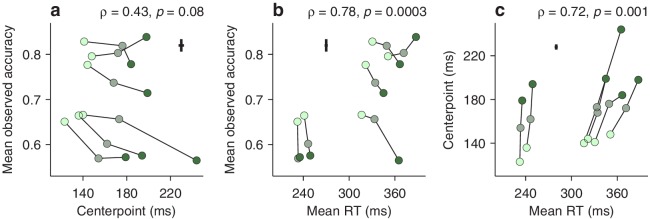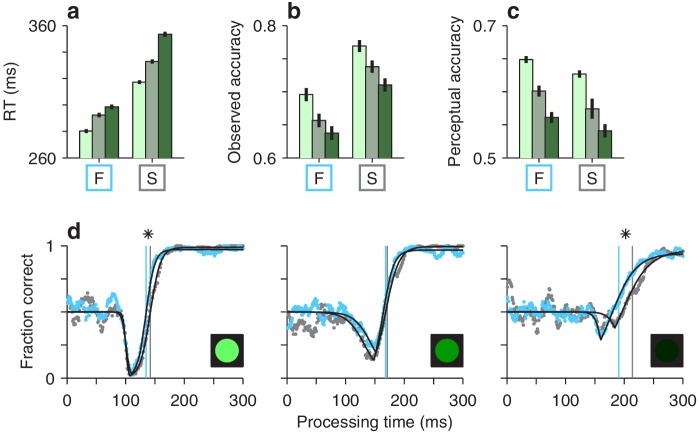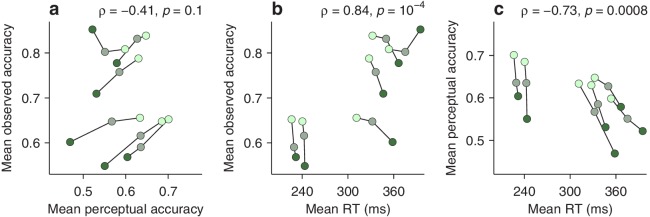Figure 5. Dissociation between perceptual capacity and overall task performance.
In each panel, the data from each participant (joined by lines) are shown for trials of high, medium, and low luminance cues (bright, grayish, and dark green points, respectively). Crosses indicate the typical (median) uncertainty (2 SEs) associated with the measurement in each direction. Partial Spearman correlations between values on the x and y axes are indicated, along with significance (Materials and methods). The partial correlation eliminates the association due exclusively to luminance. (a) Mean observed accuracy versus mean perceptual accuracy. (b) Mean observed accuracy versus mean RT. Average RT data include both correct and incorrect trials. (c) Mean perceptual accuracy versus mean RT.
Figure 5—figure supplement 1. Dissociation between perceptual capacity and overall task performance based on the curve centerpoint.
Figure 5—figure supplement 2. Decoupling perceptual and motor performance.
Figure 5—figure supplement 3. Dissociation between perceptual capacity and overall task performance as seen with the accelerated race-to-threshold model.
Figure 5—figure supplement 4. Model parameters that characterize individual perceptual performance.





